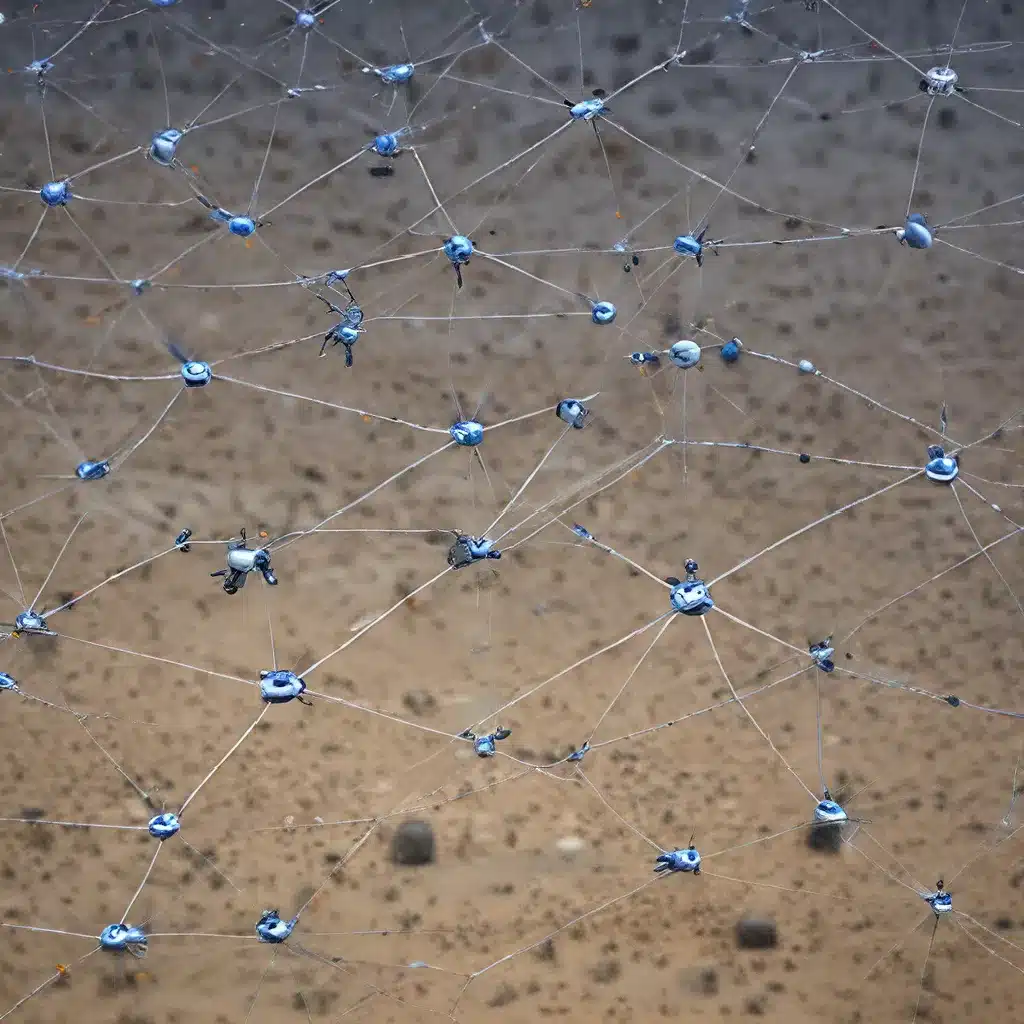
The Rise of Sensor Networks and IoT
In the rapidly evolving world of technology, sensor networks and the Internet of Things (IoT) have emerged as powerful tools for enhanced data collection, real-time monitoring, and intelligent decision-making. These interconnected systems, comprising a vast array of sensors, wireless communication protocols, and advanced analytics, are transforming various industries, from smart cities and transportation to precision agriculture and environmental conservation.
At the heart of this technological revolution are sensor networks – distributed systems of sensors that gather data from their surroundings and transmit it to centralized or decentralized processing units. These networks enable the collection of a wide range of data, including environmental conditions, asset performance, human activity, and more. Coupled with the rise of IoT, which seamlessly connects these sensors to the digital realm, sensor networks have unlocked unprecedented opportunities for data-driven insights and automated decision-making.
Challenges in Sensor Network Design and IoT Applications
As sensor networks and IoT technologies continue to evolve, they face a range of complex challenges that demand innovative solutions. From security vulnerabilities to energy management concerns, these obstacles must be addressed to ensure the reliable and efficient operation of these systems.
Security and Privacy
One of the primary concerns surrounding sensor networks and IoT is security and privacy. As these systems become increasingly interconnected, they become more vulnerable to cyber threats, such as data breaches, unauthorized access, and malicious attacks. Ensuring the confidentiality, integrity, and availability of sensitive data is crucial, especially in applications involving critical infrastructure, healthcare, or personal information.
Researchers have developed adaptive drone swarm strategies that can detect and track occluded targets in complex environments, such as densely forested areas, by leveraging synthetic aperture sensing techniques. These approaches demonstrate the potential of coordinated sensor networks to overcome the challenges of dynamic, unpredictable environments.
Energy Management
Another significant challenge in sensor network and IoT design is energy management. Sensor nodes are often deployed in remote or hard-to-access areas, where battery life and power consumption are critical factors. Developing energy-efficient sensor hardware, communication protocols, and data processing algorithms is essential to ensure the longevity and reliability of these systems.
Researchers have explored the use of meta-heuristic algorithms, such as particle swarm optimization (PSO), to guide the behavior of drone swarms in sensor network applications, enabling adaptive sampling and energy-efficient operations. These approaches leverage the inherent properties of swarm intelligence to optimize sensor network performance in complex, dynamic environments.
Scalability and Adaptability
As sensor networks and IoT systems grow in scale and complexity, the challenges of scalability and adaptability come to the forefront. Deploying and managing thousands or millions of interconnected devices requires robust network architectures, data management strategies, and coordination mechanisms. These systems must also be adaptable to changes in their environment, user requirements, or technological advancements, ensuring long-term viability and relevance.
Innovations in Sensor Network Design and IoT Applications
To address the challenges of sensor networks and IoT, researchers and industry leaders are pioneering innovative solutions that enhance security, energy management, scalability, and adaptability. These advancements are paving the way for more robust, efficient, and versatile sensor-based systems that can thrive in dynamic, complex environments.
Secure and Privacy-Preserving Sensor Networks
Ensuring the security and privacy of sensor networks and IoT systems is a critical priority. Researchers are developing advanced cryptographic techniques, lightweight authentication protocols, and distributed ledger technologies to secure data transmission, device authentication, and access control. Blockchain-based solutions, for instance, can provide tamper-resistant data storage and decentralized trust management, enhancing the overall security of these systems.
Energy-Efficient Sensor Network Designs
Addressing the energy management challenges of sensor networks and IoT is crucial for their widespread adoption and long-term sustainability. Researchers are exploring innovative hardware designs, communication protocols, and energy harvesting techniques to optimize power consumption and extend battery life.
For example, ultra-low-power sensor nodes and energy-aware routing algorithms can significantly reduce the energy footprint of these systems. Energy harvesting technologies, such as solar, thermal, or kinetic energy harvesters, can also provide self-sustaining power sources for sensor nodes, reducing the need for frequent battery replacements.
Scalable and Adaptive Sensor Network Architectures
As sensor networks and IoT ecosystems grow in scale, the need for scalable and adaptive architectures becomes paramount. Researchers are exploring hierarchical network topologies, distributed data processing, and self-organizing mechanisms to ensure that these systems can efficiently handle increasing volumes of data and adapt to changing requirements.
Fog and edge computing approaches, for instance, can distribute data processing and decision-making capabilities closer to the sensor nodes, reducing the burden on central servers and enabling real-time responsiveness. Machine learning and artificial intelligence techniques are also being integrated into sensor networks to enable autonomous reconfiguration, fault tolerance, and dynamic optimization of the system’s performance.
The Future of Sensor Networks and IoT
As the world becomes increasingly interconnected and data-driven, the role of sensor networks and IoT technologies will continue to expand, transforming industries and shaping the way we interact with our environment. The innovations in security, energy management, and scalable architectures discussed in this article are just the beginning, paving the way for a future where sensor-based systems seamlessly integrate with our daily lives, enhancing efficiency, sustainability, and quality of life.
From smart cities that optimize resource allocation and environmental monitoring systems that detect and respond to changes in real-time, to precision agriculture platforms that optimize crop yields and industrial automation solutions that improve productivity, the impact of sensor networks and IoT will be far-reaching and profound.
As we continue to explore the frontiers of these technologies, the sensor network and IoT community must remain vigilant, addressing emerging challenges and embracing a collaborative, interdisciplinary approach to drive further advancements. By leveraging the power of distributed sensing, adaptive algorithms, and intelligent coordination, we can unlock the full potential of sensor networks and IoT, creating a more connected, sustainable, and responsive world.